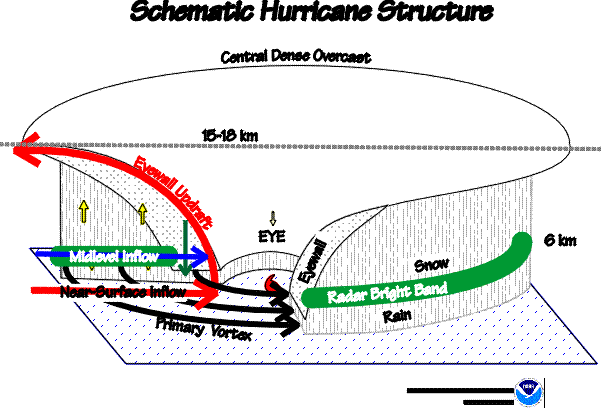 | Cross section of the core of a mature hurricane. The axisymmetric primary swirling motion (curved black arrows) of the vortex is sustained by a radial and vertical secondary circulation (red arrows) that consists of frictional inflow that loses angular momentum to the sea as it gains moist enthalpy and a convective updraft around the eye that turns the latent heat into sensible heat to provide the buoyancy needed to loft air from the surface to tropopause level. The updraft entrains midlevel air promoting mass and angular momentum convergence (blue arrow). It is this inflow that supplies the excess angular momentum needed to spin up the vortex. Precipitation driven convective updrafts (vertical black arrow) form as hydrometeors fall from the outward sloping updraft. Condensation in the anvil causes a mesoscale updraft above the 0°C isotherm and precipitation loading by snow falling from the overhanging anvil causes a mesoscale downdraft below 0°C isotherm (yellow arrows). The melting level itself is marked by the radar brightband (green) and maximum mass convergence. Inside the eye, thermally driven descent warms and dries the tropospheric column, leading to substantial pressure fall there. |
|
Links of Interest
AOML Tools & Resources
Employee Tools
|
